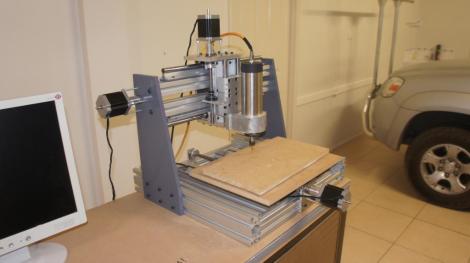
This desktop mill would be impressive coming from anyone, but we’re really excited that it was made as a high school project. [Praneet Narayan] built it during his design and technology class. As his build log shows, he worked with a range of different tools to make sure he had a rock-solid platform on which to mount the motors and cutting head.
The uprights of the frame are made from two steel plates. After hacking them to rough shape with a plasma cutter he finished the edges with a mill. The two parts were then tack welded together so that the mounting holes could be drilled in one step, ensuring alignment between the two sides. The rest of the frame parts are built from extruded rails but he did machine a set of mounting plates to pull it all together. You can see the finished machine milling a message in MDF in the clip after the break.
Continue reading “Desktop Mill Built As A High School Project”















